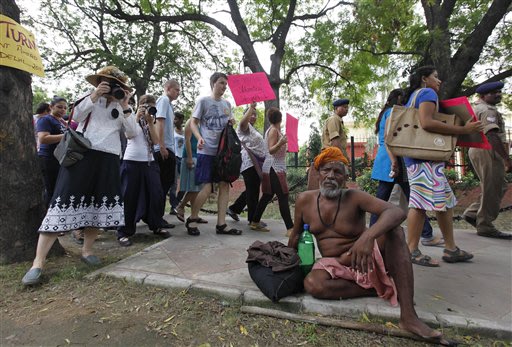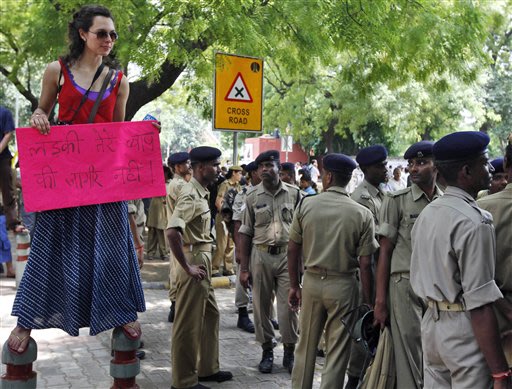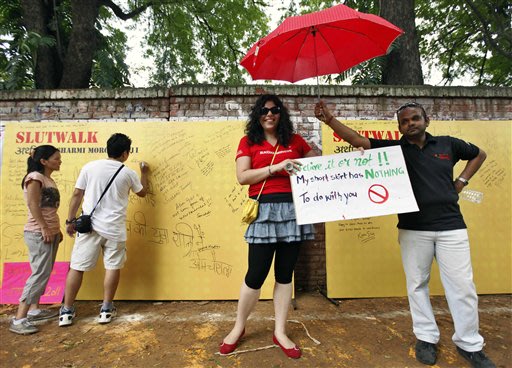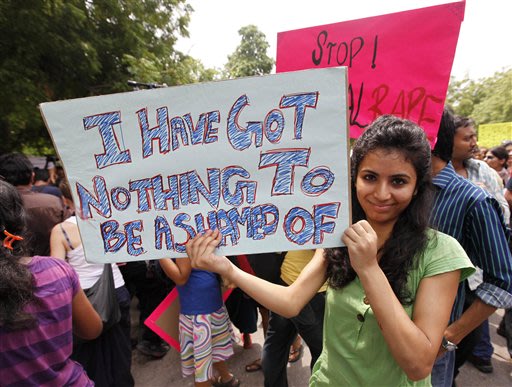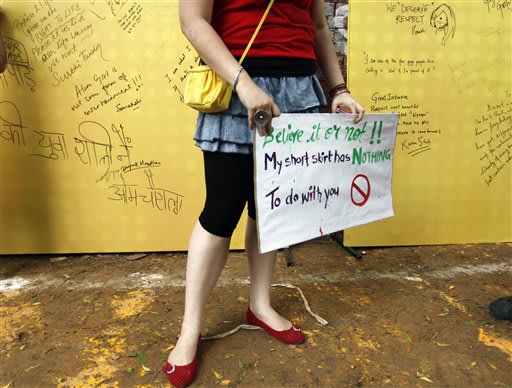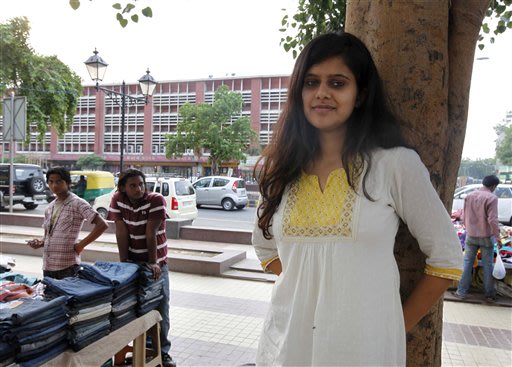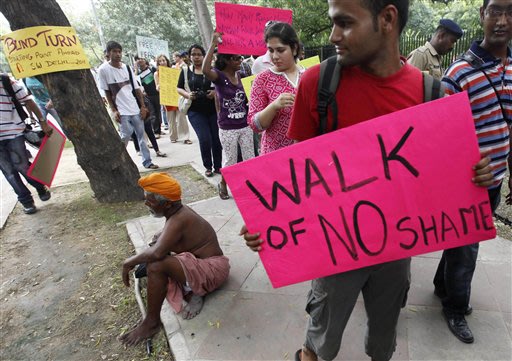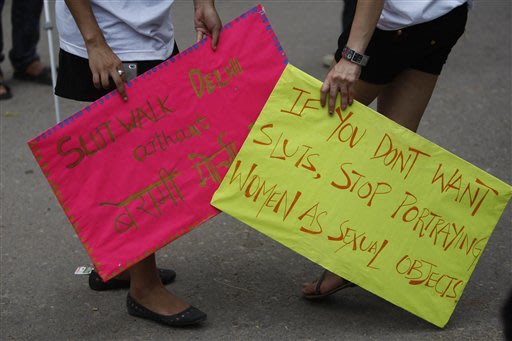First-generation filmmakers from India take in Rochester's rich cinematic landscape
By Stuart Low 
Liyo Kikon, a filmmaker from Nagaland, India, checks out a Red camera during a tour of Rochester’s Young Lion Studios. / CARLOS ORTIZ/staff photographer
Five filmmakers from Nagaland, India, visited Rochester this month:
Liyo Kikon. He got an early start at age 13 by designing a website with thousands of cheat codes for games. Interested in animation and film directing, he often works with Kele Yhoshu. Their most popular film is Liquidators, a portrait of an assassin for hire.
Sophy Lasuh. A graduate of the Edinburgh (Scotland) College of Art, she owns a film production studio with Sesino Yhoshu.
Myingthungo Lotha. He runs the Portrait Studio in Kohima, Nagaland's capital. He has produced documentaries for the Nagaland government and run programs to teach photography and filmmaking to local youth.
Kele Yhoshu. An expert in 3-D modeling and animation, he created several music videos.
Sesino Yhoshu. She is Kele's cousin and Lasuh's partner at the Nagaland production studio Cue Hue. Her latest film, The Imaginary Line, portrays a 17-year-old Naga boy from Burma who crosses the border to India "to have a better life."
Culture shock can be surprisingly agreeable.
Early this month, five young filmmakers were packing suitcases in their native Nagaland — a remote, mountainous region of India known for its turbulent politics.
A few days later, they were exploring the Eastview Mall, Dinosaur Bar-B-Que and Rochester's film industry. They kept comparing the local sights to their private visions of America, drawn largely from Friends, Scrubs and American Idol.
Their verdict?
"Best place I've been in my life," says Kele Yhoshu, 25. "The cars and houses are so clean, the people really friendly and nice."
"Don't forget the air-conditioning!" adds Sesino Yhoshu, Kele's 25-year-old cousin. "We don't have it back home."
The five visitors made Nazareth College their home base during the 12-day tour that ended Tuesday. They took part in workshops, screenings and studio tours during a unique cultural exchange.
"This is a tremendous opportunity to connect two sides of the world," said co-organizer Heather Layton, senior lecturer in art at the University of Rochester. "Not only will this be a once-in-a-lifetime experience for the filmmakers ... but a rare opportunity for Rochester community members to learn about a culturally vibrant region of South Asia scarcely known to the outside world."
Cultural exchanges like this also add up to bring visibilility to both Rochester and its film industry.
'Art diplomacy'
The exchange started in April 2010, when seven South Asian artists visited UR. Layton showed them her multimedia art and began chatting with Nagaland musician Theja Meru. "We talked about the need for art diplomacy in a world of fragile international relations," she says. "Two months later, professor K. Kannan, vice chancellor of Nagaland University, invited me to visit Nagaland as a guest of the Indian government."
Last December, Layton and her husband — Brian Bailey, professor of adolescent education at Nazareth College — flew to Nagaland for a week's tour. In that brief time they managed to launch its first contemporary painting exhibit, an international photo show and a youth film festival.
Both were impressed by their Naga hosts' warm hospitality.
"In Nagaland, it does not take long before you are addressed as a sister or brother," says Layton, a 36-year-old Brighton resident. "Kids called us aunt and uncle from the start."
Eager to sustain these new friendships, she and Bailey offered to host two Naga filmmakers in Rochester. To their surprise, the Nagaland government offered to pay plane fares for five. About $15,000 in other expenses were funded by sponsors including Nazareth, UR and the Rochester Area Community Foundation.
Lights, action
The five visitors, all fluent in English, represent Nagaland's first generation of filmmakers.
"There are hardly any courses in film study, even in India," says Sophy Lasuh, 32. "Everyone said to me, 'How can you earn your bread and butter, there's no film industry here!' But that just made me want to do it more."
Newly arrived in Rochester, she and her four friends are eager to watch its movie makers at work. The Nagaland group spends hours touring the vast production facilities at Young Lion Studios and Animatus Studio, western New York's major animation company.
At Animatus, Liyo Kikon and Kele Yhoshu raptly watch high-tech wizardry on a battery of computer screens. The two men have made animated films together, but with far simpler equipment.
Creative director Dave Puls shows them a new music video starring a Viking with a red beard and stinky feet.
They also get an advance peek at a Wegmans cat food ad starring animated versions of CEO Danny Wegman's own cats, Buju and Ziggie. These pixilated kitties dance, play rock guitar and water-ski.
"This is like a dream studio," says Kikon, 26. "We should open one in Nagaland, maybe in 10 years."
He and Kele Yhoshu show off one of their own animated videos at a July 20 screening at Nazareth. Set to a Nagaland rock hit, it features naked space aliens tumbling through Mayan-style ruins. The effect is comically surreal, as if Salvador Dali is enjoying an acid trip atop Machu Picchu.
"It's really about people trying to break free from the system," says Kikon. "We used a home computer to make it."
A more traditional film wins an enthusiastic response from the town-and-gown audience at the screening. Sesino Yhoshu's Apfutsa is a serene tribute to her grandfather, who is glimpsed amid village scenes — green roofs atop a lush hillside, a strutting rooster, a shadow sliding across gray steps.
Before long, however, the grandfather shares a tragic story: His father and daughter died in the jungle after fleeing Indian government soldiers. He tells us, "I am never at peace because there is no unity among our people."
Indeed, Nagaland's political struggles often surface in these filmmakers' conversation and movies.
Located in northeastern India on the border of Myanmar (the former Burma), it is home to 16 major tribes that have relied for centuries on farming, crafts and forestry. Its history often has been stormy, marked by deep-rooted tribal disputes and repressive Burmese and British rule.
Naga tribes began campaigning for a self-governing state during World War I. After India gained independence in 1947, Naga nationalists rebelled against their Indian rulers and won statehood in 1963.
For the five filmmakers, the memories of conflict are still fresh.
"We grew up in a gun culture and can't help being affected by it," says Lasuh. "In the middle of the night, you'd hear a knock on the door and Indian soldiers would search the house."
Today, the gun culture remains, but the threat of violence has eased.
"I saw men with machine guns, shopping and carrying their kids," says Layton, recalling the first days of her Nagaland trip. "At first it was frightening, but it quickly became the norm."
Naga influence
Inevitably, Nagaland's troubled history will find its way into the filmmakers' productions. Lasuh already is working on a film about Indian paramilitary raids against Naga villagers in 1987.
She worries how Nagaland viewers will react to this sensitive material. But she has a professional partner at her side — Sesino Yhoshu.
"We met on the set of a shoot in 2004 and got along really well," says Yhoshu. "We talked about our dreams and decided to work together."
That same year, they founded the Cue Hue production studio. At first, they made films for government agencies — hardly glamorous work, but a reliable source of income. Recently they've received more private commissions, but seldom for the human interest stories that interest them.
"We take from our own pockets to make those kinds of films," says Yhoshu. "I want to shoot a documentary about Nagaland children living with HIV and AIDS."
All five filmmakers take a messianic view of their profession.
"I want to change people's lives," says Kikon. "There is a lot of miscommunication in Nagaland, and I believe that films can make a difference."
"It's a very powerful medium for telling stories," echoes Sesino Yhoshu.
By now the Nagaland visitors are back in their scenic homeland, entertaining their families with snapshots of Rochester's streets and enviably air-conditioned interiors.
"We are taking a lot back from this trip," says Sesino Yhoshu. "Rochester is right on the path to heaven. But you know: Nagaland is heaven."
source: democratandchronicle.com








